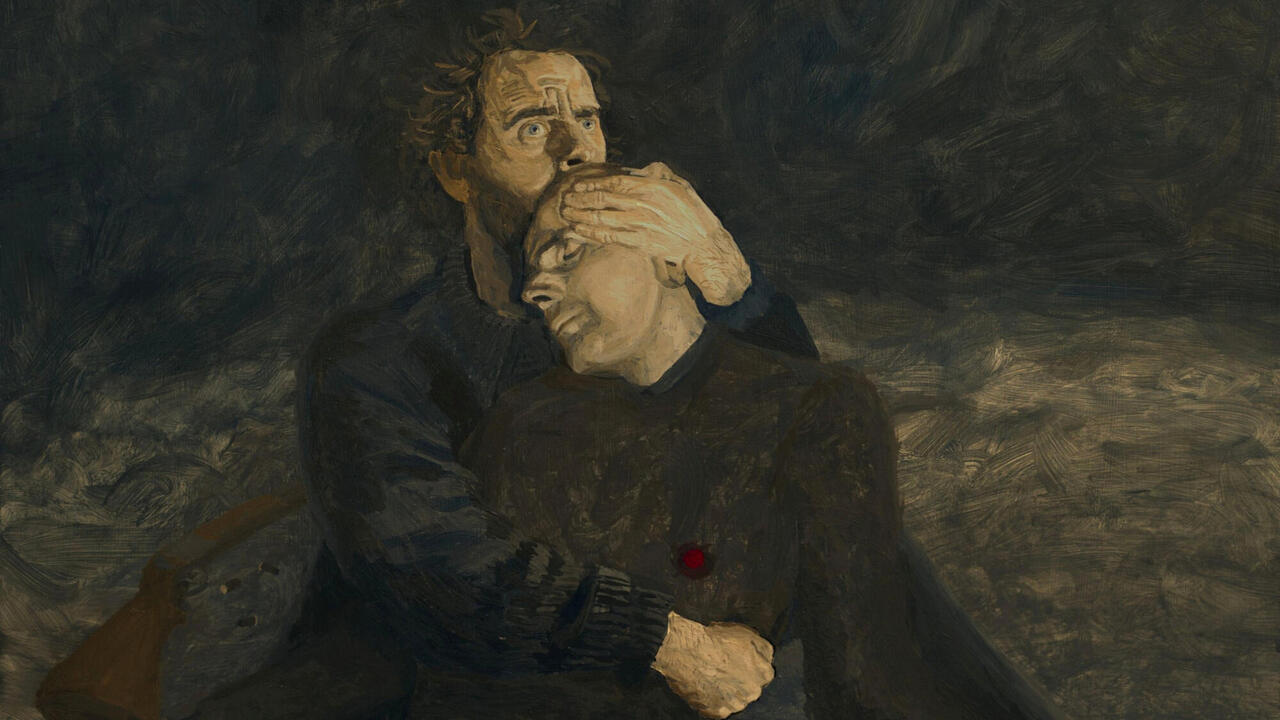Seeing the Unseeable: The First Image of a Black Hole
How does an image captured 55 million light-years from Earth reflect on humanity?
How does an image captured 55 million light-years from Earth reflect on humanity?

There’s a document on my computer titled ‘The language of space’, in which I copy and paste lines from articles about different astronomical phenomena. I’m an art critic, I’m trained to look at images but, as a writer, I can’t ignore the beauty of professional language that I have no access to. ‘The local universe’: an approximate term denoting a region of up to a billion light years; ‘globular cluster’: a ‘collection of stars that orbit a galactic core’, according to Wikipedia; ‘nebulous’, which originates in ‘nebula’ (Latin for ‘fog’): an interstellar cloud of dust and gases. As gravity stretches and squeezes, familiar verbs take on ethereal meaning.
Beyond the realm of description, there are images. I’ve seen the rings of Saturn and the moons of Jupiter. The screensaver on my phone is a photo of a sunrise on Mars. In a way, I do not see these photographs as evidence, but as a catalyst for what is beyond. In February 2017, when NASA released an artist-drawn illustration showing the possible surface of TRAPPIST-1f, a planet in the TRAPPIST-1 system, the scale of which is similar to that of our own, it seemed like something I had already seen. A rocky, fluid terrain with a huge star dipping into the liquid, it’s hard to look at it and not imagine a sunset. Only there are three more stars in the sky and it looks nothing like Earth. It looks like something I’ve already seen because I’ve looked at DeviantArt fantasy paintings, because I’ve seen the covers of science-fiction books, because I’ve always wanted to imagine something like this: the rocks, as crisp as icebergs, their reflections cast in the dark liquid, the orange of the sky, the sun and three moons. When the New York Times ran a special feature with a hundred photographs taken by the Cassini spacecraft, which spent 13 years orbiting Saturn, reporter Jonathan Corum wrote: ‘Cassini discovered geysers near the south pole of Enceladus, where plumes of water shoot into space and fall back as bright snow.’ It is the landscape of dreams.

In Camera Lucida, Roland Barthes writes: ‘the Photograph is never anything but an antiphon of “Look,” “See,” “Here it is.”’ When the first image captured of a black hole in the centre of the galaxy Messier 87 was released this week, scientists explained that it was the first instance of visual evidence that such objects exist. Which is not to say that scientists were ignorant of their actual existence: they detected the way black holes’ gravity affected the orbits of planets near them; the Hubble Space Telescope observed the disappearance of matter into a black hole; there are recordings of gravitational waves from the collisions of two black holes. Supermassive black holes, which can have a mass of more than a billion suns, likely exist at the centres of most galaxies. But there was no image, only renderings: computer graphics, things imagined.
The photograph of the black hole – look, see, here it is – depicts light that was emitted 54 million years ago and was captured over a period of five days in April 2017 by eight telescopes located in Arizona, Chile, Hawaii, Mexico, Spain and the South Pole. Together, they formed a single telescope, the span of which is almost as big as the Earth. It took two decades to design the telescopes, define their locations and the time at which they would register the image. In the process, scientists used millions of simulations created by computational astrophysicists. These simulations look like GIFs, or computer drawings. They also look quite similar to the final photograph, which was assembled from five million gigabytes of data from the octet of telescopes.

While, when it comes to space, I stand in defence of dilettantism, in taking an interest in things so complex that, even after years of study, they rebuff attempts at comprehension (that is part of the bewitching beauty of space), I will not attempt to summarize the theory of relativity. But one detail, broached by science writer Sophia Chen in Wired, is worthy of mention: our sense of space and time is intuitive. Einstein theorised that only at low-gravity (on Earth, for instance) does space and time function in a knowable manner, while in other gravity states it will likely shift in ways that are unforeseeable and inexplicable. Furthering this, he predicted that, given their immense gravitational pull, black holes would warp space-time itself, creating a curve in the cosmic fabric through which smaller objects would inevitably fall. What this photograph shows is light on the rim of that curve. Collectively, the telescopes photographing the black hole were called the Event Horizon Telescope (EHT). In relativity, the event horizon is the space-time region beyond which, due to the intensity of the gravitational pull, escape is impossible. Light emitted from beyond the event horizon will never be visible outside of it.

The New York Times wrote: ‘an image of the unobservable’. The Guardian: ‘We have seen what we thought was unseeable’. On Twitter, people compared the photograph of the black hole to the computer model image in Christopher Nolan’s Interstellar (2014). (In the scene in question, Matthew McConaughey and Anne Hathaway are pushing out of a black hole’s gravity. The black hole is visible from the spaceship’s window, round and luminous and bisected by a straight line of light – the event horizon.) They compared it to the black hole in Claire Denis’ latest film High Life (2018). They compared it to the eye of Sauron from Lord of the Rings (2001-03). Upon seeing the unseeable, we see what we have seen before.
Images from telescopes and satellites and missions to space condition our imagination. The Cassini spacecraft was named after the 17th century French astronomer Giovanni Domenico Cassini. The gesture is beautiful: an attempt to connect the different generations of humans who have looked up and wondered. On Mars, there is a rover called Curiosity. There have been missions named ‘Pioneer’, ‘Discovery’, ‘Dawn’ and ‘Voyager’. The naming of these missions is never ironic: it exposes a vulnerable desire for knowledge, for access to the universe, for something to look at and then imagine a beyond. But looking at the black hole, the point at which the unseeable comes into view, is also to gaze back at humanity: its many limitations, its many longings, its rare moments of hopeful beauty. It all reminds me of a simple piece of advice from Marilynne Robinson’s Gilead (2004), a novel shaped like a long letter from an aging father to his young son. It is complete with an ease of being human, of observing the world and taking pleasure in it. Early in the book, the father writes: ‘This is an interesting planet. It deserves all the attention you can give it.’
Main image: Black Hole, 2019. Courtesy: EHT collaboration






















